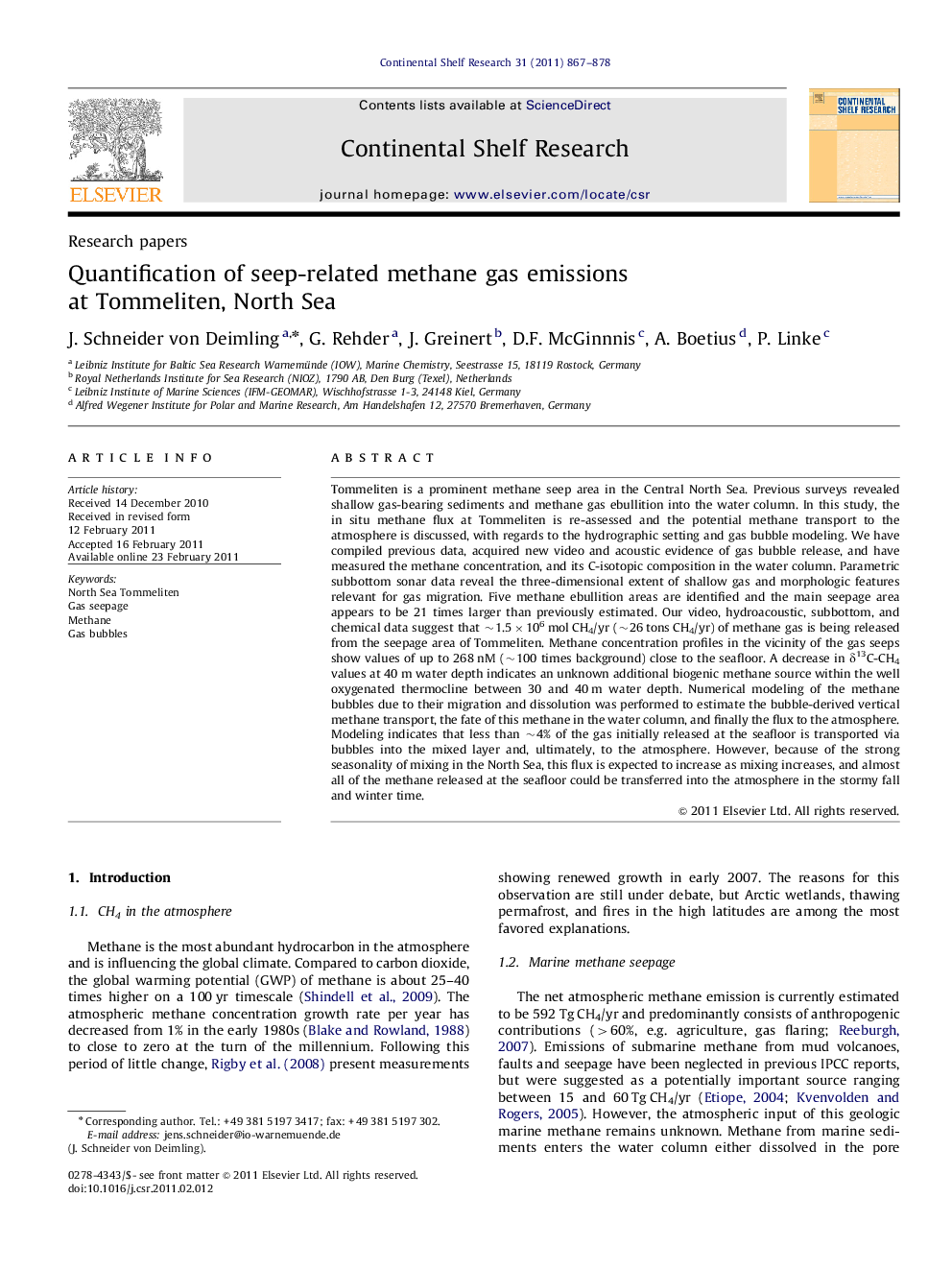| کد مقاله | کد نشریه | سال انتشار | مقاله انگلیسی | نسخه تمام متن |
|---|---|---|---|---|
| 4532689 | 1626179 | 2011 | 12 صفحه PDF | دانلود رایگان |

Tommeliten is a prominent methane seep area in the Central North Sea. Previous surveys revealed shallow gas-bearing sediments and methane gas ebullition into the water column. In this study, the in situ methane flux at Tommeliten is re-assessed and the potential methane transport to the atmosphere is discussed, with regards to the hydrographic setting and gas bubble modeling. We have compiled previous data, acquired new video and acoustic evidence of gas bubble release, and have measured the methane concentration, and its C-isotopic composition in the water column. Parametric subbottom sonar data reveal the three-dimensional extent of shallow gas and morphologic features relevant for gas migration. Five methane ebullition areas are identified and the main seepage area appears to be 21 times larger than previously estimated. Our video, hydroacoustic, subbottom, and chemical data suggest that ∼1.5×106 mol CH4/yr (∼26 tons CH4/yr) of methane gas is being released from the seepage area of Tommeliten. Methane concentration profiles in the vicinity of the gas seeps show values of up to 268 nM (∼100 times background) close to the seafloor. A decrease in δ13C-CH4 values at 40 m water depth indicates an unknown additional biogenic methane source within the well oxygenated thermocline between 30 and 40 m water depth. Numerical modeling of the methane bubbles due to their migration and dissolution was performed to estimate the bubble-derived vertical methane transport, the fate of this methane in the water column, and finally the flux to the atmosphere. Modeling indicates that less than ∼4% of the gas initially released at the seafloor is transported via bubbles into the mixed layer and, ultimately, to the atmosphere. However, because of the strong seasonality of mixing in the North Sea, this flux is expected to increase as mixing increases, and almost all of the methane released at the seafloor could be transferred into the atmosphere in the stormy fall and winter time.
Research highlights
► 735 vents estimated.
► Methane emission ∼1.5×106 mol CH4/yr; 26.3 tons CH4/yr.
► Only 4% direct impact on atmosphere.
► Strong seasonal bias expected.
► Previous surface measurements in mid to high latitude areas might under represent the methane emissions to the atmosphere.
Journal: Continental Shelf Research - Volume 31, Issues 7–8, 15 May 2011, Pages 867–878